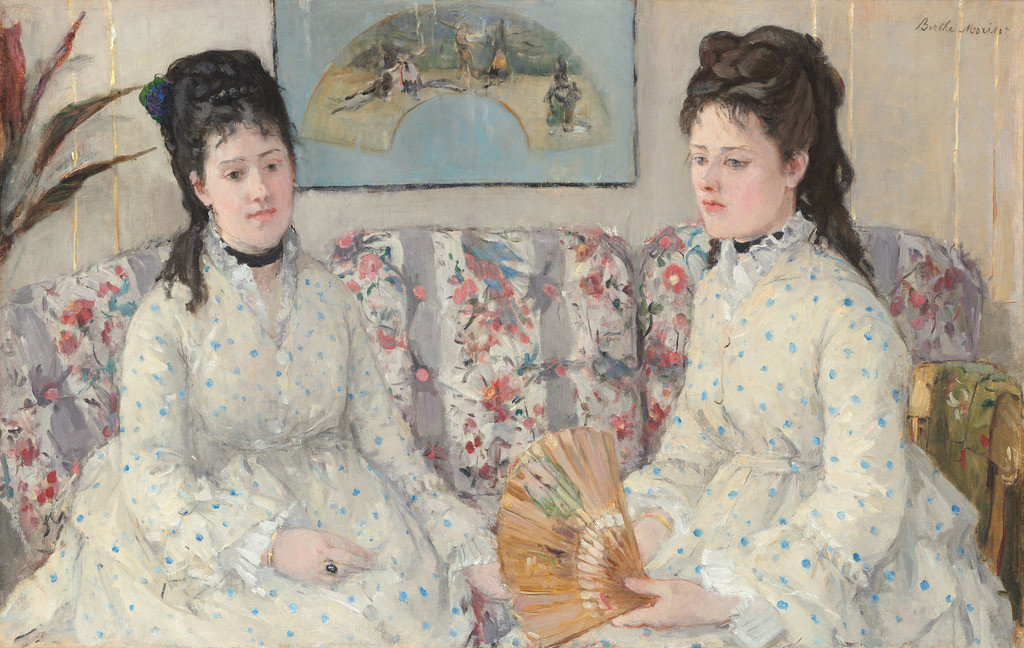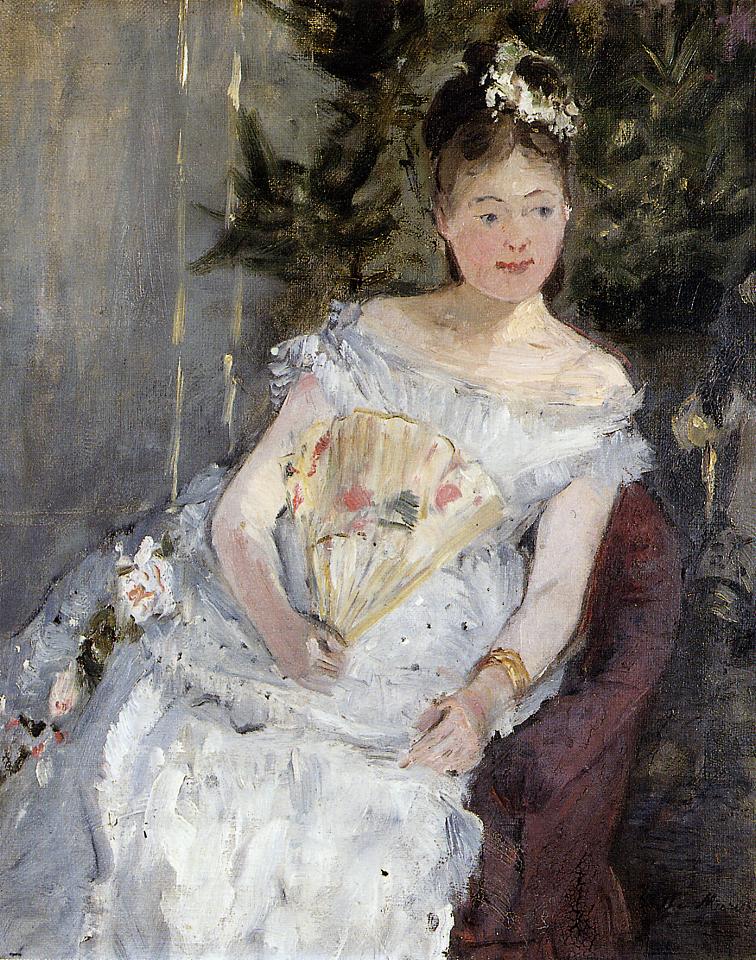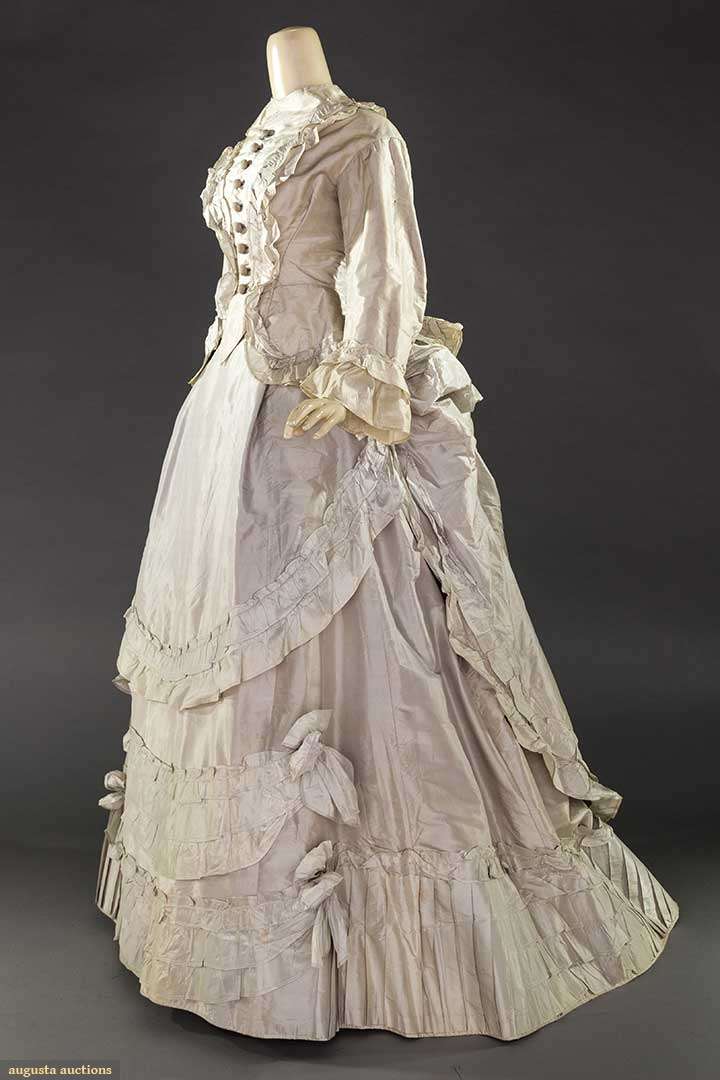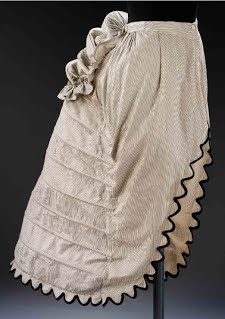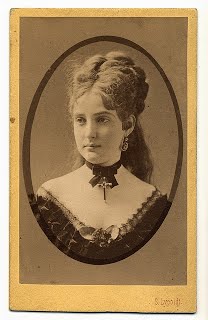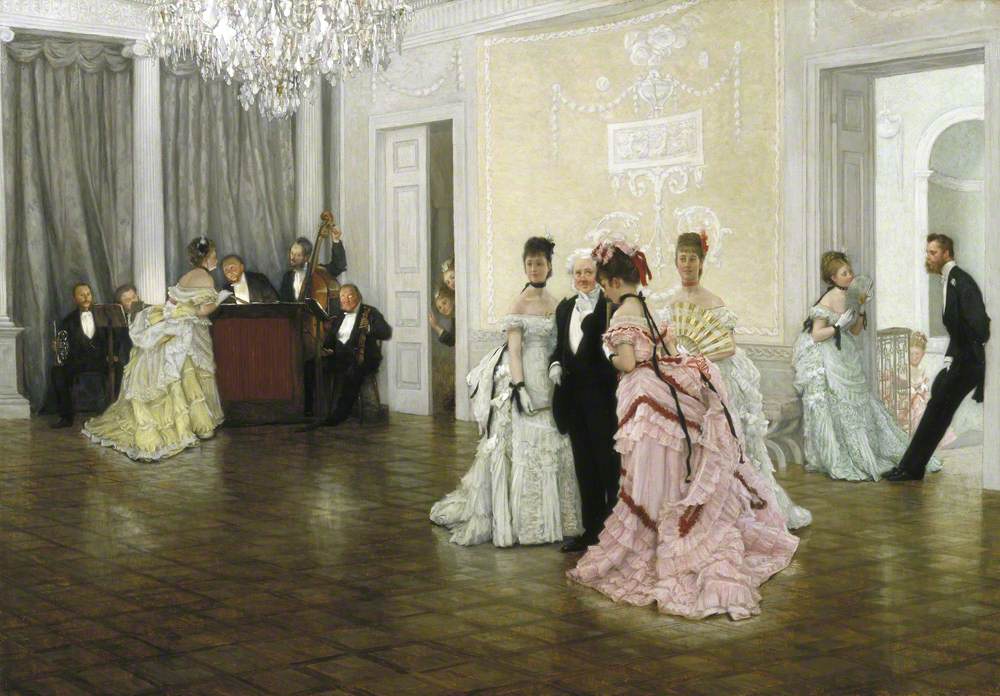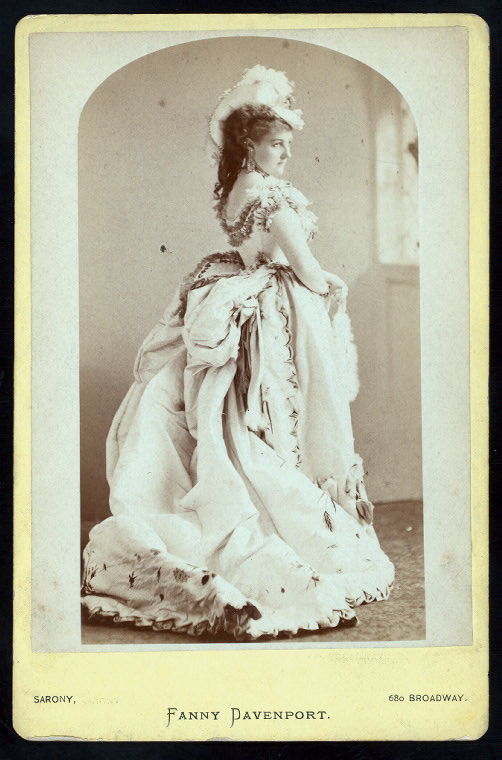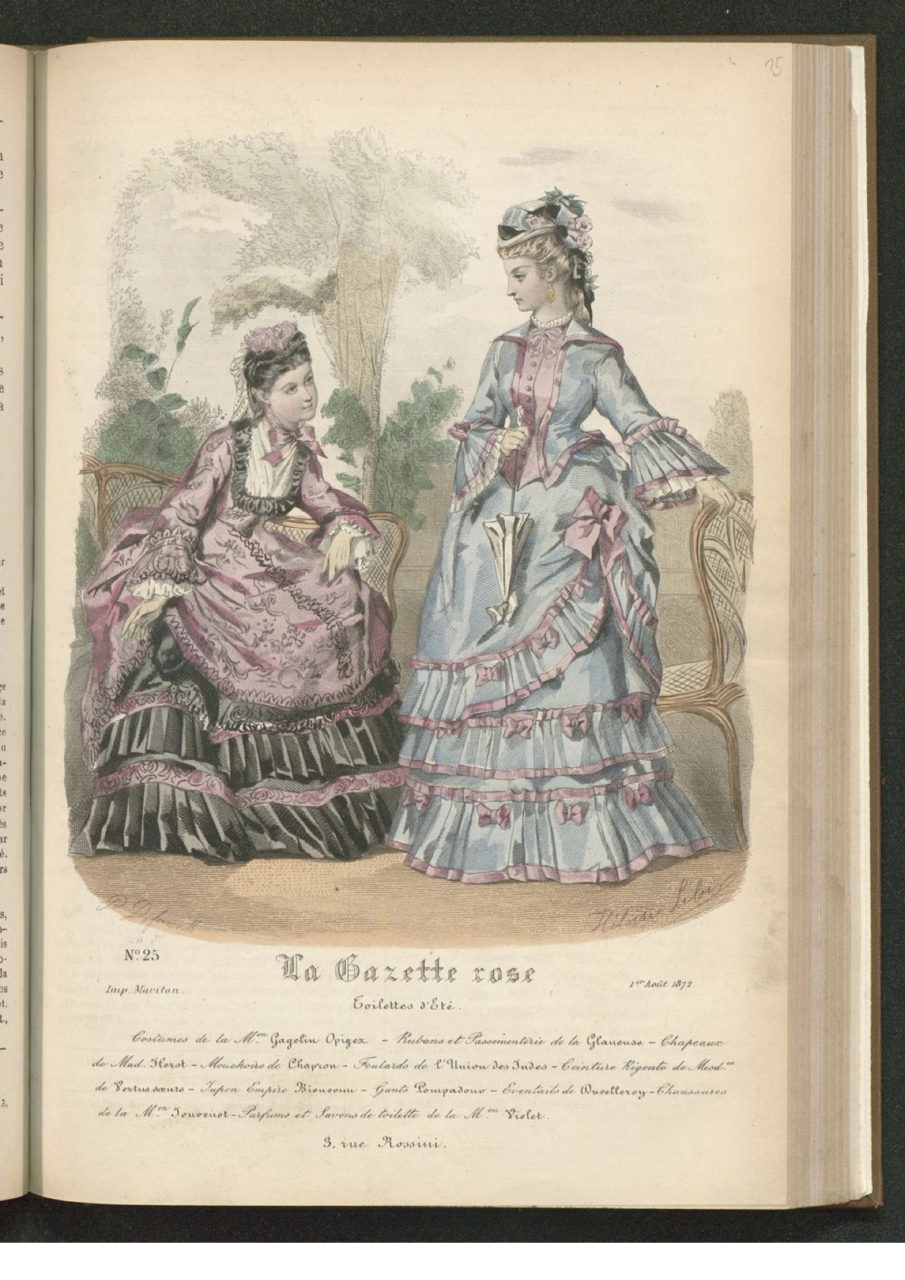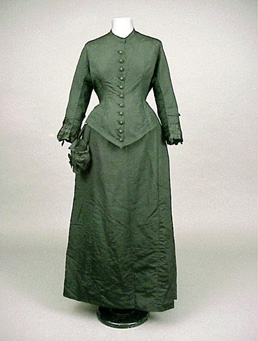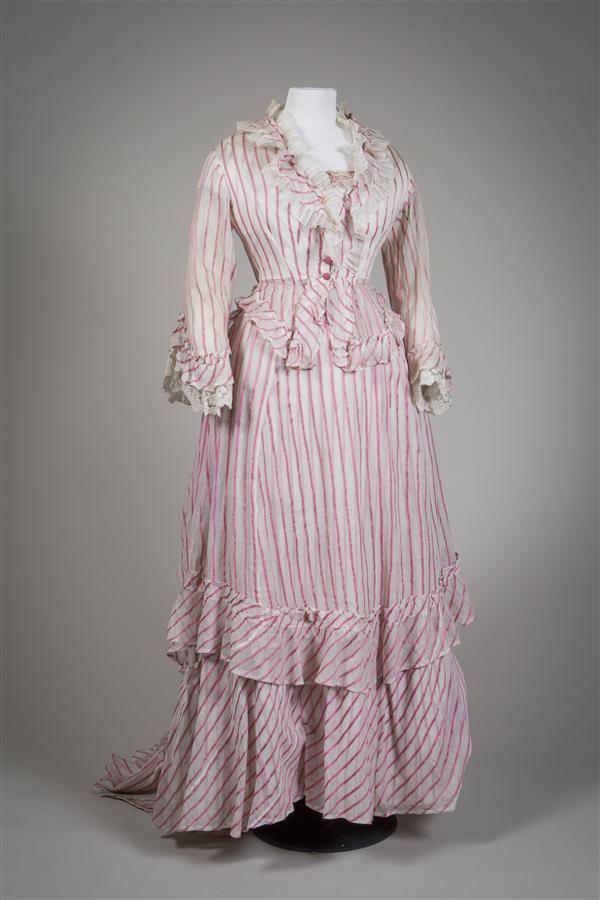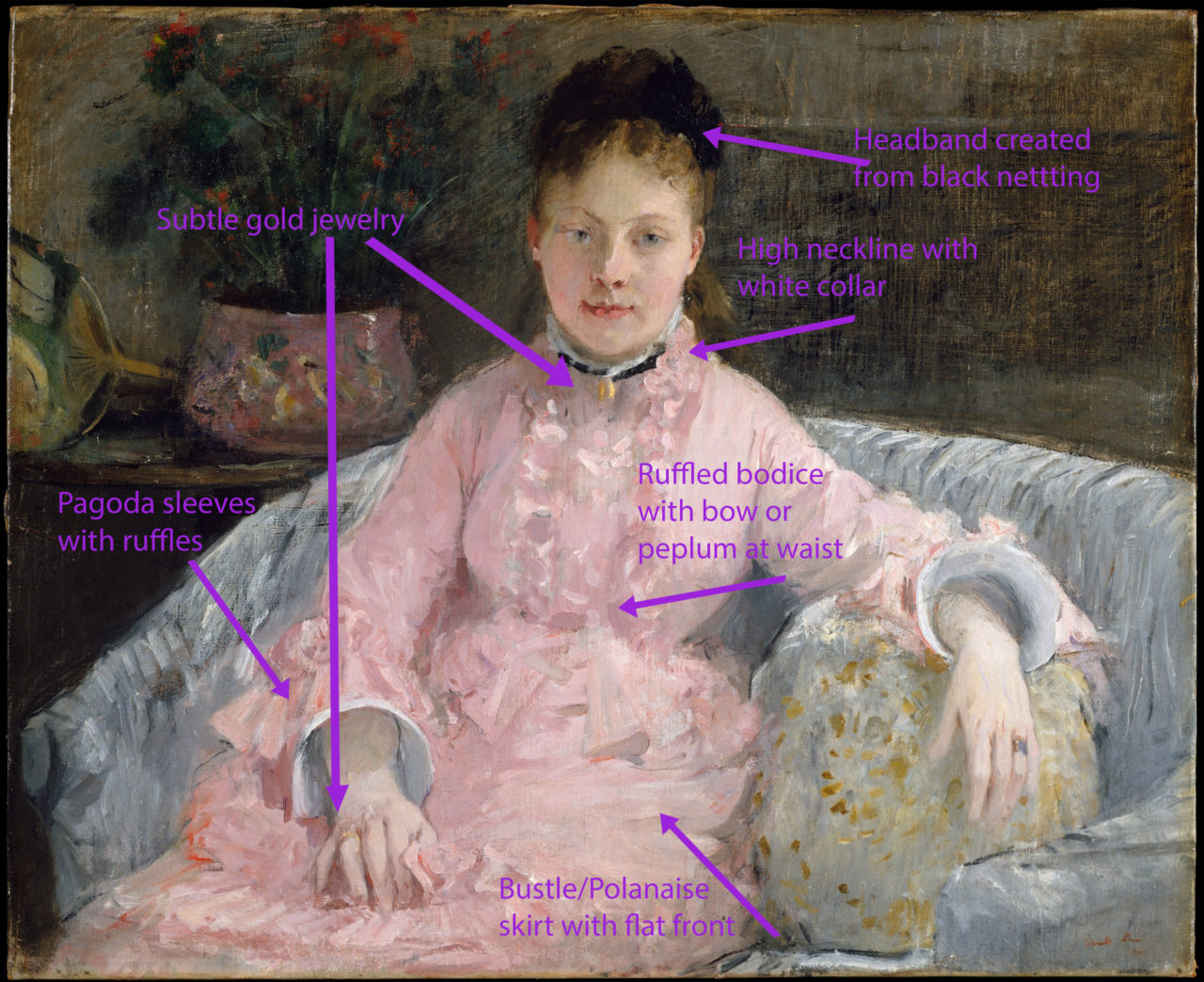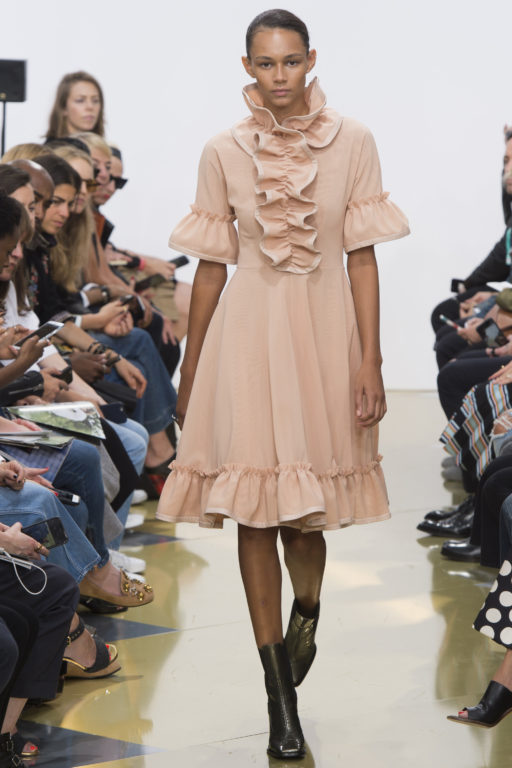Berthe Morisot’s portrait of teenager Marguerite Carré features a light pink ruffled day dress paired with black velvet and lace accessories, embodying the fashionable trends of 1870s Paris.
About the Portrait
Artist Berthe Morisot (Fig. 1) was born in 1841 to an affluent family in Bourges, France. Like many young girls of the time with means, Morisot received private training to develop her art education. She learned to paint by copying the Old Masters, and upon registering as a copyist at the Louvre in the 1850s she made lasting connections with other artists. In 1864, twenty-three-year-old Morisot made her first appearance at the Salon, and she continued to exhibit her work in following years to mostly positive reviews (Garb). Although the first Impressionist exhibition wasn’t until 1874, Morisot experimented with the style for many years prior, as The Pink Dress reflects. Morisot was only twenty-nine years old when she completed the painting, and it is one of the only surviving works from her early painting career (Metropolitan Museum of Art).
The young sitter in the portrait was well-to-do teenager Marguerite Carré, who was probably around sixteen years old when she first posed for Morisot. She and her older sister Valentine were among Morisot’s earliest models. In fact, the two sisters are speculated to be the joint subjects of a work that Morisot painted a year prior (Fig. 2), since the background was identified as the interior of Carré’s home (Bailey 24). Three years after The Pink Dress was completed, she became the fashionable subject of Young Girl in a Ball Gown (Fig. 3).
This portrait was created in Carré’s home, the Villa Fodor, which was built in 1856 in Passy, an elegant neighborhood west of Paris that was popular with upper-middle-class families. According to Jacques-Emile Blanche, who was present during the painting process, Morisot was indecisive about the details of the portrait. Although Carré seemed to be the perfect model, sitting “straight as a tent peg” like a “fashionable doll”, it took Morisot many sessions to complete the painting to her satisfaction. Blanche stated:
“[Morisot] constantly changed her mind and painted over what she had done once the session was at an end, and [Marguerite] was obligated to pose for months at a time, without the sketch seeming to advance any further.” (Bailey 96)
It should be noted that Blanche’s characterization of Morisot’s approach to painting is likely colored by gendered ideas about female artists of the time, which saw them as unserious and indecisive.
Fig. 1 - Charles Reutlinger (German, 1816-1881). Photograph of Berthe Morisot, 1875. Paris: Musée Marmottan Monet, 35369. Source: Wikipedia
Fig. 2 - Berthe Morisot (French, 1841-1895). The Sisters, 1869. Oil on canvas; 52.1 x 81.3 cm (20 1/2 x 32 in). Washington: The National Gallery of Art, 1952.9.2. Gift of Mrs. Charles S. Carstairs. Source: The NGA
Fig. 3 - Berthe Morisot (French, 1841-1895). Portrait of Marguerite Carre (Young Girl in a Ball Gown), 1873. Oil on canvas. Private collection. Source: WikiArt
Berthe Morisot (French, 1841-1895). The Pink Dress (Albertie-Marguerite Carré), 1870. Oil on canvas; 54.6 x 67.3 cm (21 1/2 x 26 1/2 in). The Metropolitan Museum of Art, New York, 2003.20.8. The Walter H. and Leonore Annenberg Collection, Bequest of Walter H. Annenberg, 2002. Source: MMA
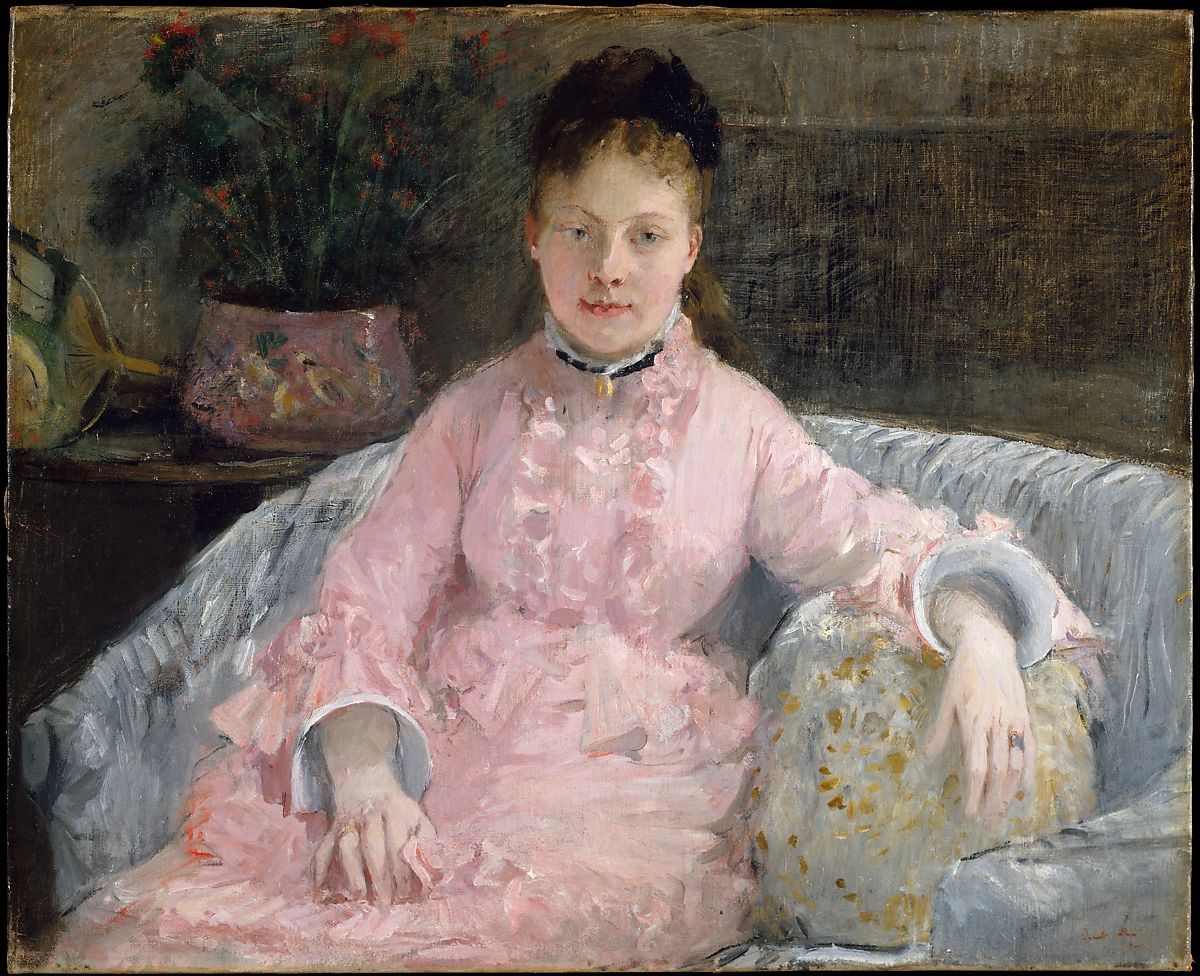
About the Fashion
Carré is pictured in a light pink high-collared dress with ruffles along the center front and cuffs. The sleeves are narrow and a little loose until midway down her forearm, where they flare out into engageantes (Simon 58). Her dress appears to be either silk taffeta or cotton voile. Its waistline is at the fashionable waist, which in this era sat slightly above the natural waist. The bodice is a basque bodice, meaning that it extends beyond the waistline in a kind of peplum. Although Carré’s gown is mostly pink, the viewer can see a touch of white with her tiny ruffled collar and starched under-cuffs that peek out from under the edges of her gown. Her dress probably looked similar to the purple gown in figure 4.
The high neckline and longer sleeves of the dress signify this is a daytime outfit, since low necklines and short sleeves were reserved for evening gowns during the nineteenth century. Compare this day bodice to the evening bodice in Morisot’s 1873 portrait of Carré (Fig. 3), which is cut off-the-shoulder and has barely any sleeve, exposing her décolletage and arms.
Although it is difficult to identify details on Carré’s pink skirt, we do see the tell-tale edge of an apron front, equally ruffled, and we can assume that her skirt has volume in the back. The dress in figure 5 has a similar draped apron front, which is an overskirt piece that sits under the basque bodice and over the foundation skirt. Carré would most likely have worn a crinolette (Fig. 6), a type of shorter crinoline with the bulk at back, underneath her skirt. This would achieve the desired fullness behind, emphasized by bustling on the skirt itself, whilst keeping the front of the skirt flat. (Johnston 132). It is likely that there was a bow or some sort of decoration at back for visual detail.
She also wears a black ribbon, probably satin or velvet, with a circular gold pendant around her neck. The ribbon is tied over the white collar of the dress. This was a popular style, especially for evening; the woman in Figure 7 sports one with a bow. Carré also wears two gold rings: one on each ring finger.
Fig. 4 - Designer unknown (Possibly Belgian). Summer dress, 1872-74. Brussels: Musée du costume et de la dentelle. Crinolines & cie, la bourgeoisie s'expose (1850-1890), (May 28, 2015 - April 10, 2016). Source: Stéphanie Linsingh
Fig. 5 - Designer unknown (American). Ice blue taffeta reception gown, 1870. Silk taffeta lined with glazed brown cotton, completely hand-stitched; (b 34", w 25", skirt l 43"-60" in). VT: Augusta Auctions. Source: Augusta Auctions
Fig. 6 - Designer unknown (Great Britain). Crinolette, ca. 1870. Spring steel hoops, covered in striped cotton, fastened and adjusted with metal eyelets and tapes. London: Victoria and Albert Museum, T.775C-1913. Given by Messrs Harrods Ltd.. Source: VAM
Fig. 7 - S. Lypoldt (Croatian). Photograph of an unknown woman, ca. 1875. Carte de visite. Source: Flickr
Fig. 8 - James Tissot (French, 1836–1902). Too Early, 1873. Oil on canvas; h 71 x w 102 cm. London: Guildhall Art Gallery, 738. bequeathed by Charles Gassiot, 1902. Source: ArtUK
Both Carré and her sister were described as quite fashionable by Blanche, often wearing dresses “with the waistline just below the breast and with a fluted frill open in the shape of a heart”, attaching a “band of velvet that trailed down the back… Theirs was a look that said, ‘Follow me, young man’ and was one very much in keeping with the style of the Villa Fodor” (Bailey 24). Indeed, Morisot primarily depicted well-educated, stylish, wealthy women in her paintings, keeping with the status quo concerning the fashions of Passy and greater Paris. The “velvet that trailed down the back” that he mentions can be seen in fellow modern-life painter James Tissot’s 1873 painting Too Early (Fig. 8).
Fig. 9 - Napoleon Sarony (American, 1821-1896). Fanny Davenport, 1875. Carte de visite. New York Public Library, Billy Rose Theatre Collection, TH-07326. Source: NYPL
Fig. 10 - Maison Gagelin-Opigez (Costumes); Hélöise Leloir (Illustration) (French, 1820–1873). Toilettes d'Eté, La Gazette Rose, no. 21 (August 1872). Heinrich Heine Universität Düsseldorf, urn:nbn:de:hbz:061:1-605689. Source: hhu
Carré’s hair and accessories are fashionable for the time, and indicate that she was passing time inside rather than going out. Piled high in braids and waves, wispy bangs optional, early 1870s hairstyles stopped mimicking the sideways width of earlier gowns and began to model themselves on the newest fashion: the bustle. The silhouettes were similar, with the bulk kept to the back and tumbling down like a waterfall from the top (Fig. 9).
According to Blanche, what Carré was wearing on her hair was “a discreet black net over one side of her chignon” (Bailey 22). This lacy piece is just enough to be modest, yet fashionable; her head is covered, but not with a hat for going out like those on the women in figure 10. Seasonal colors are an old concept, but have changed over time: these are dresses for summer, despite the heavy-looking black in the ensemble at left. The seated woman wears a small black lacy hat, a more structured and slightly more formal version of Carré’s little lace cap.
There is a possibility that Carré’s costume was custom-made, ordered from a Parisian couture designer such as Charles Frederick Worth. While we are used to seeing flashy, luxe gowns from couture houses in this era, women did order simpler gowns from their favorite couturiers, like the early 1870s Worth mourning gown in figure 11. Or the dress could have been made in consultation with Carré’s own preferred dressmaker, who operated a small shop. However, it is also possible that Carré’s dress was purchased as a set from one of Paris’ emerging department stores such as Le Louvre, La Samaritaine, or Le Printemps. At this time, there was an emerging market for “semi-ready-made” garments that were adjusted to the customer’s measurements to ensure the best possible fit (Simon 15). Light pinks, blues, and purples were popular summer dress colors during these years, ensuring that Carré’s gown was worn in style (Fig. 12).
Fig. 11 - Charles Frederick Worth (English, 1825-1895). Charles Frederick Worth Mourning dress, Early 1870s. Black silk taffeta; (w 26 inches). Doyle Auctions, Sale 0112121, Lot 482. Source: Doyle
Fig. 12 - Designer unknown (Netherlands). Four part ensemble dress (day body, evening body, skirt, and overskirt), ca. 1873-1874. Cotton, silk. The Hague, NL: Gemeentemuseum Den Haag, 1038957. Source: Europeana collections
Its Legacy
Given that Carré’s dress was reviving fashions from a century before with its flounced sleeves, it only makes sense that designers are looking back on the styles of her time and using similar elements today. JW Anderson (Fig. 13) and Bora Aksu’s (Fig. 14) Spring/Summer 2016 collections in London both featured pale pink dresses with high necklines and many flounces on the front, sleeves, and/or waist.
Fig. 13 - J.W. Anderson (British, 1984-present). Ready-to-wear, Spring/Summer 2016. Source: Vogue
Fig. 14 - Bora Aksu (Turkish). Ready-to-wear, Spring/Summer 2016. Source: Vogue UK
References:
- Bailey, Colin B., et al. The Annenberg Collection: Masterpieces of Impressionism and Post-impressionism. New Haven: Yale University Press, 2007. http://www.worldcat.org/oclc/907172656
- Garb, Tamar. “Morisot, Berthe.” Grove Art Online & Oxford Art Online. Oxford University Press, accessed November 10, 2015, http://www.oxfordartonline.com/subscriber/article/grove/art/T059646 (subscription required).
- Johnston, Lucy, and Marion Kite. Nineteenth-Century Fashion in Detail. 2nd ed. London: V & A Publications, 2005. http://www.worldcat.org/oclc/879170559.
- Metropolitan Museum of Art. “Pink Dress (Berthe Morisot).” Accessed November 10, 2015. http://www.metmuseum.org/collection/the-collection-online/search/438009
- Simon, Marie, and E. F. N. Jephcott. Fashion in Art: The Second Empire and Impressionism. London: Zwemmer, 1995. http://www.worldcat.org/oclc/33973359.



